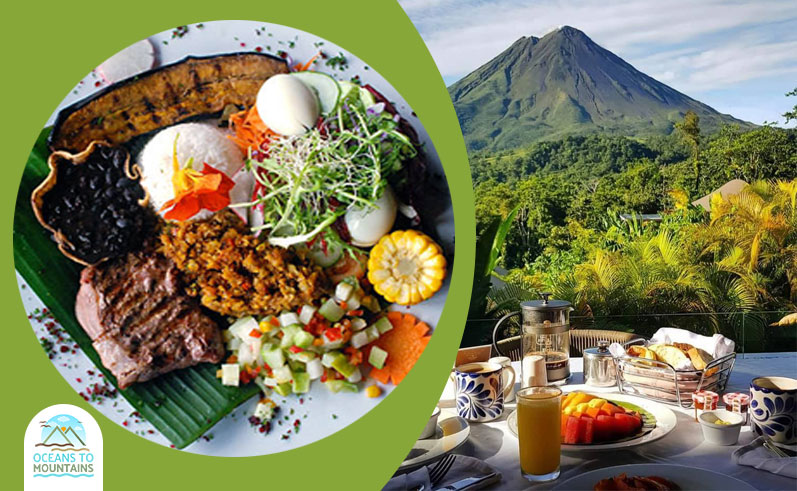
Overview:
Costa Rican cuisine is a vibrant reflection of the country’s rich culture, history, and natural bounty. Known for its fresh ingredients, balanced flavors, and emphasis on simplicity, Costa Rican food is beloved for its wholesome, satisfying dishes that highlight the essence of the region’s agriculture and coastal influences. This culinary guide offers a glimpse into the diverse flavors that define Costa Rican cuisine.
The Heart of Costa Rican Cuisine: Rice and Beans
At the core of Costa Rican food is gallo pinto—a delicious and humble dish made from rice and black beans, often paired with eggs, tortillas, and a side of sour cream or cheese. It is a staple of daily meals, enjoyed for breakfast, lunch, and dinner. Gallo pinto showcases the importance of rice and beans in Costa Rican culture, providing a hearty and nutritious foundation for countless variations of local dishes.
Traditional Dishes
· Casado: One of the most popular meals in Costa Rica, casado is a balanced plate that typically consists of rice, beans, a meat (chicken, beef, or fish), salad, fried plantains, and sometimes a slice of avocado. The dish reflects the country’s agricultural abundance and is a fulfilling option for both locals and tourists.
· Sopa Negra: A comforting black bean soup, sopa negra is another staple in Costa Rican cuisine. Flavored with garlic, onions, cilantro, and sometimes a boiled egg, this dish is often served with rice or accompanied by a slice of cornbread. It’s a warm, hearty option, perfect for the cooler evenings.
· Ceviche: With the country’s extensive coastline, Costa Rica is a paradise for seafood lovers. Ceviche is one of the most refreshing dishes on offer, featuring raw fish or shrimp marinated in lime juice with onions, cilantro, and chili peppers. Served with crispy tortilla chips or crackers, ceviche is a popular appetizer or light meal.
· Olla de Carne: A rich beef and vegetable stew, olla de carne is made with large chunks of beef, potatoes, carrots, yuca, and plantains. The combination of slow-cooked meat and fresh vegetables offers a savory, comforting meal that’s perfect for family gatherings or as a nourishing dish after a long day.
Fresh Fruits and Juices
Costa Rica is abundant in tropical fruits, and fresh fruit juices are a quintessential part of the cuisine. Common fruits like papaya, pineapple, mango, guanabana (soursop), and maracuya (passion fruit) are often blended into refreshing drinks called frescos. These fruit-based beverages are perfect for hydrating during a hot day and offer an explosion of tropical flavor.
Sweets and Desserts
Costa Rican desserts often reflect the country’s use of simple, locally-sourced ingredients. Arroz con Leche, a creamy rice pudding made with cinnamon, vanilla, and sugar, is a popular sweet treat. Another beloved dessert is tres leches cake, a sponge cake soaked in a mixture of three types of milk—evaporated, condensed, and heavy cream—resulting in a moist and indulgent dessert.
The Influence of Global Flavors
While traditional Costa Rican dishes form the backbone of the country’s culinary identity, the influence of international cuisines is also evident. Italian, Spanish, and Afro-Caribbean influences are woven into many dishes, especially in urban areas, where fusion dishes and contemporary twists on classics can be found.
Conclusion
From the iconic gallo pinto to the refreshing ceviche, each dish offers a taste of Costa Rica’s natural beauty and rich agricultural heritage. Whether you're savoring a hearty casado or indulging in tropical fruits, a culinary journey through Costa Rica is a feast for the senses.
